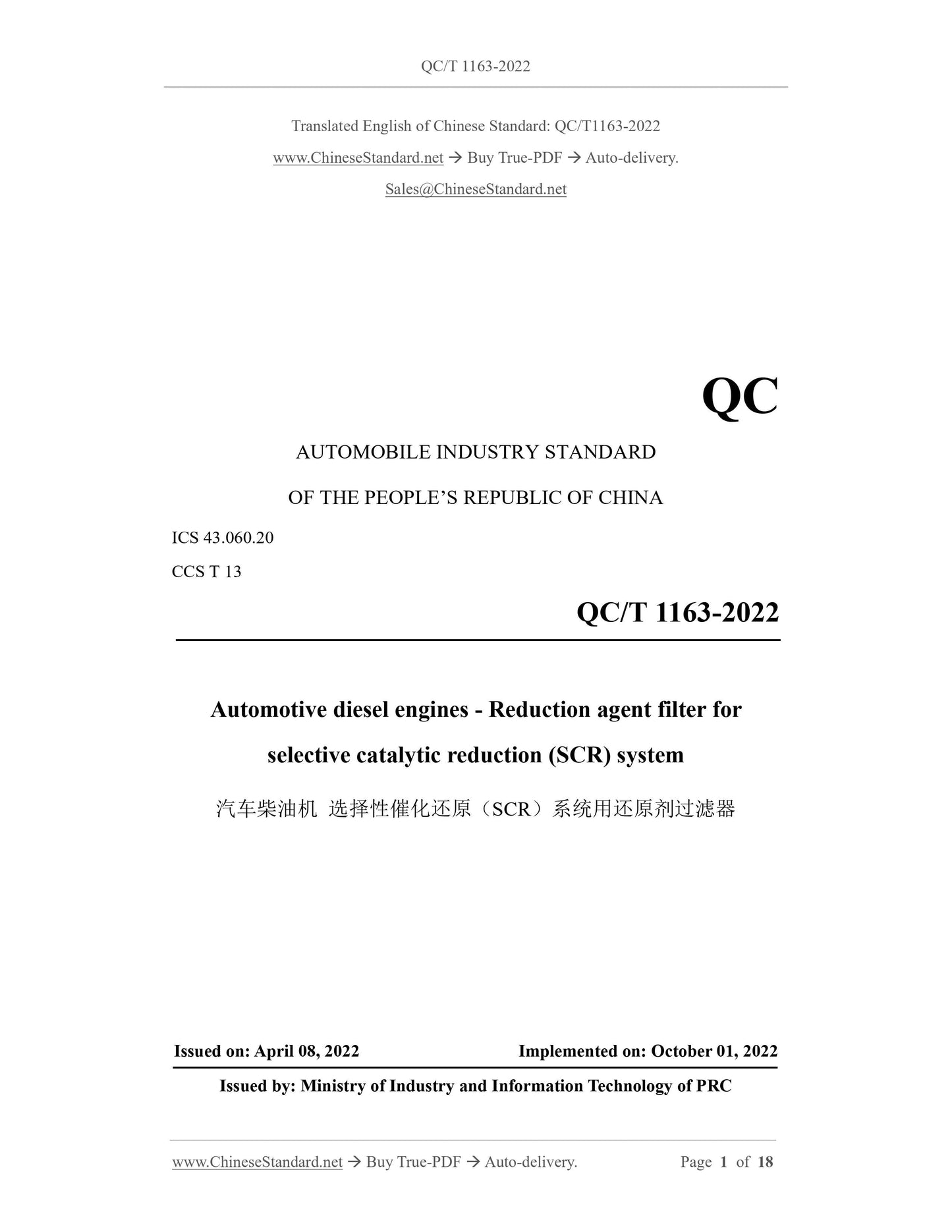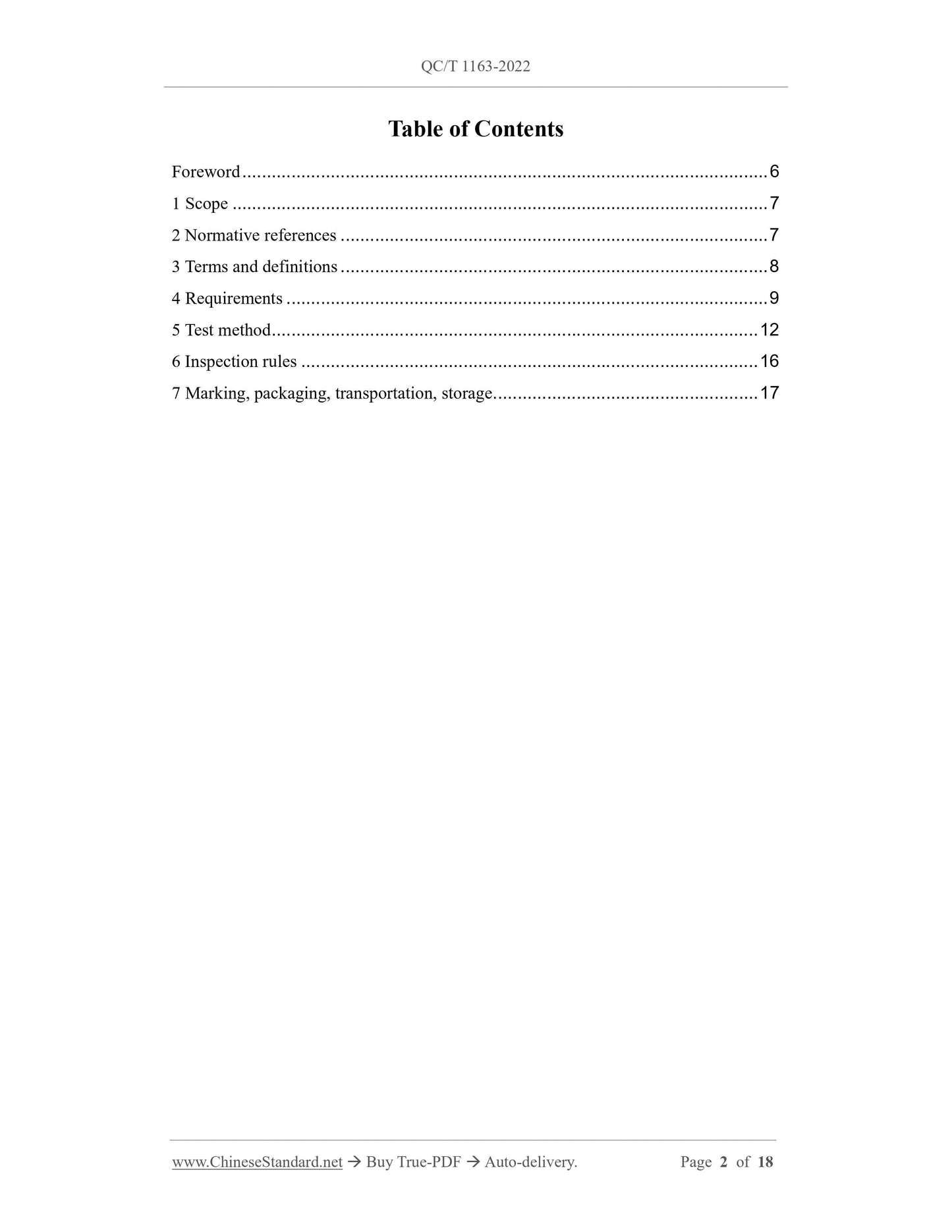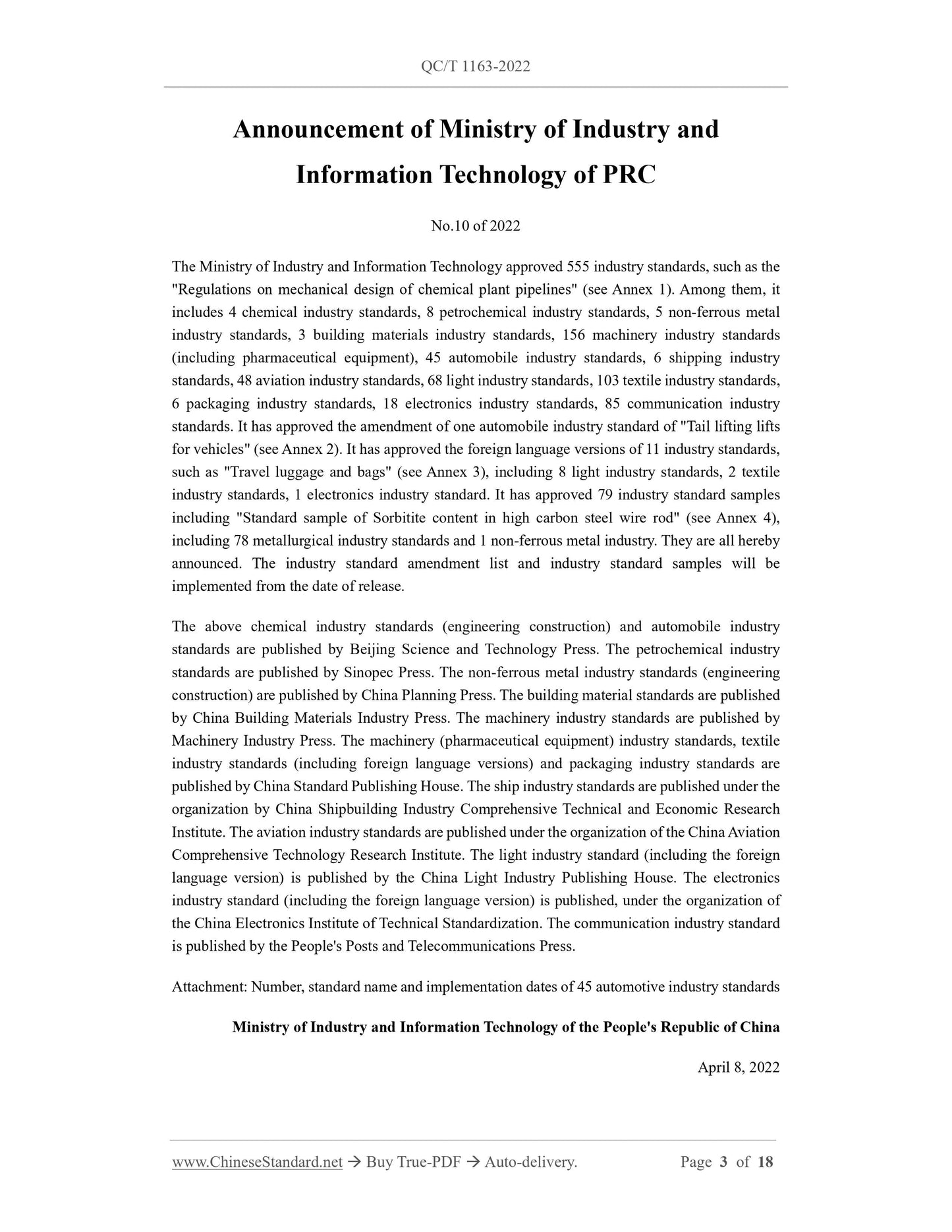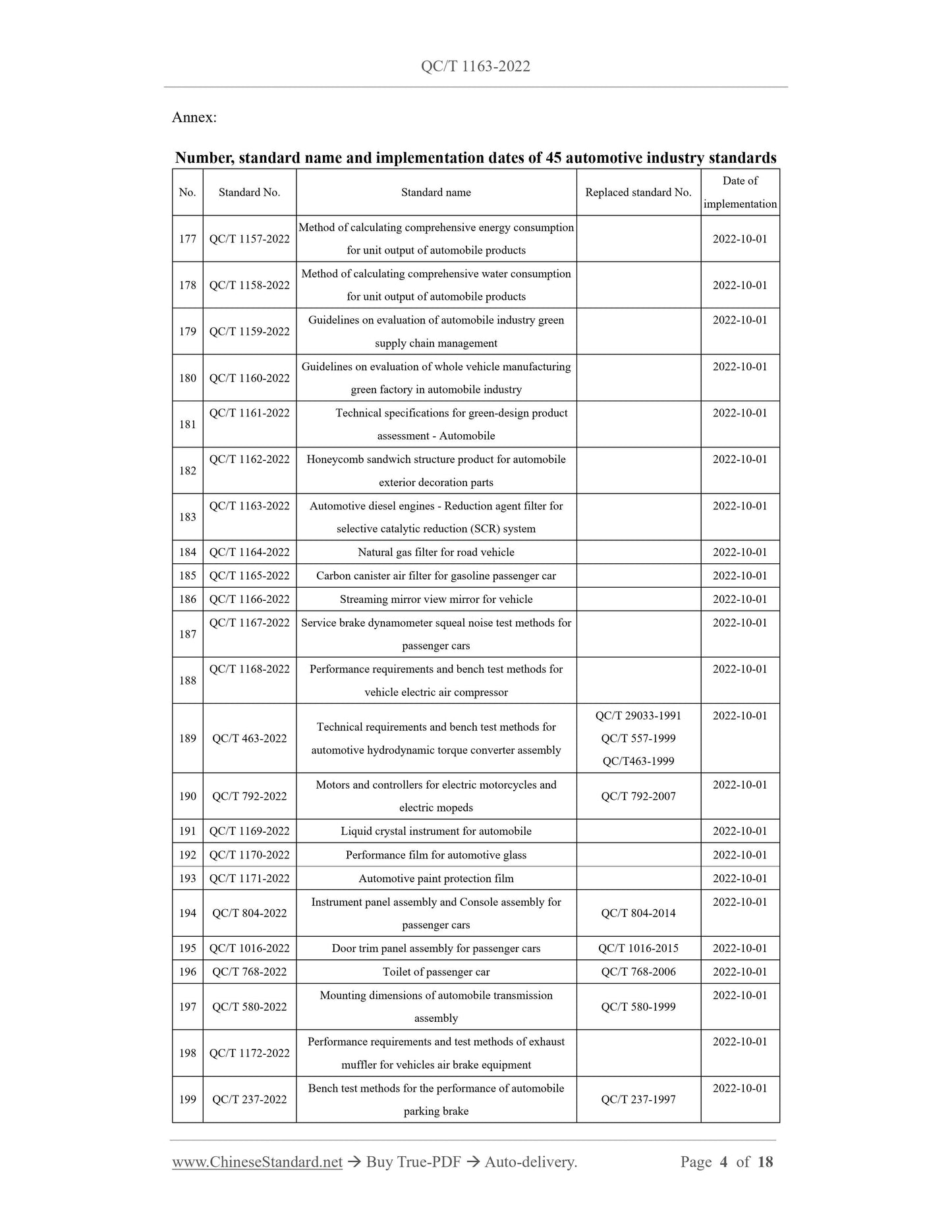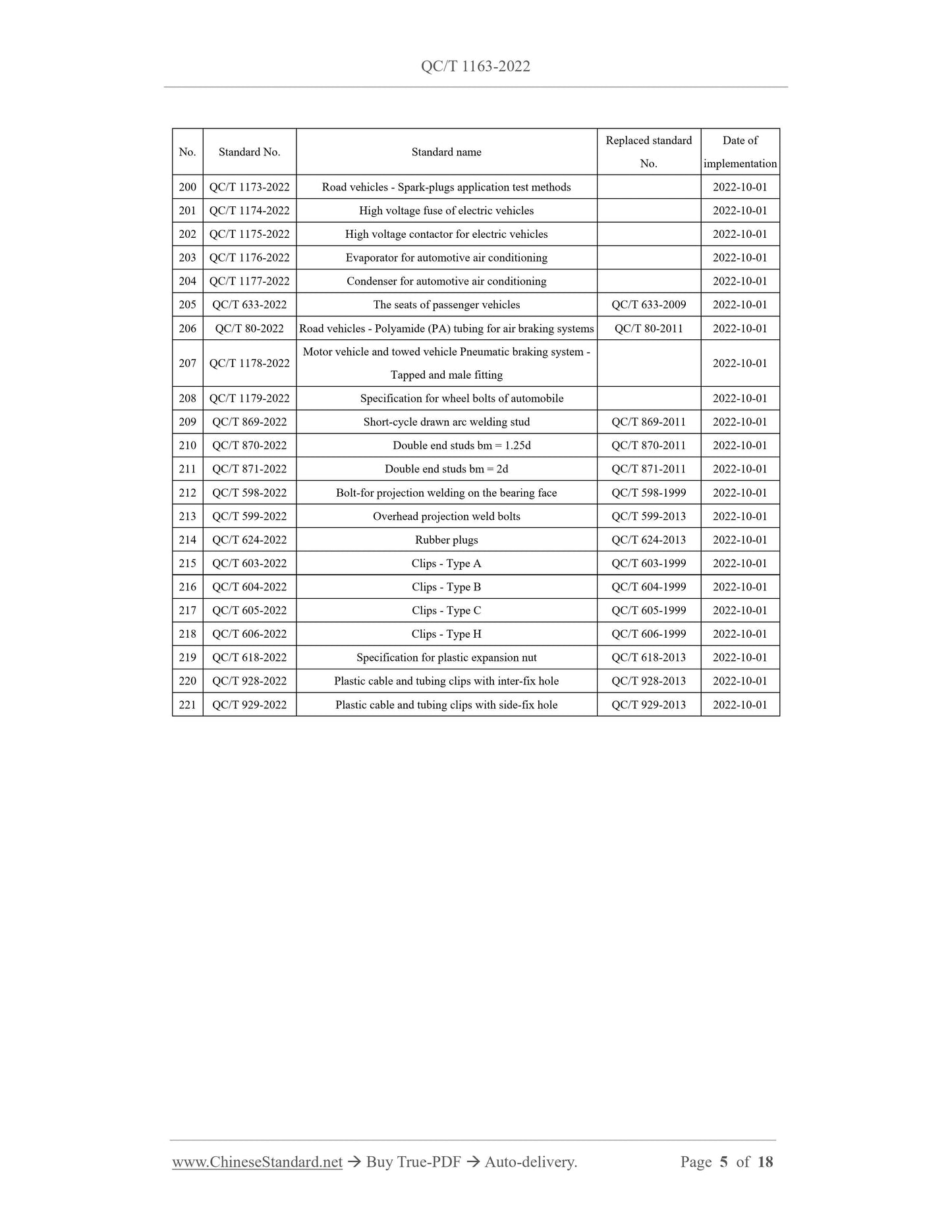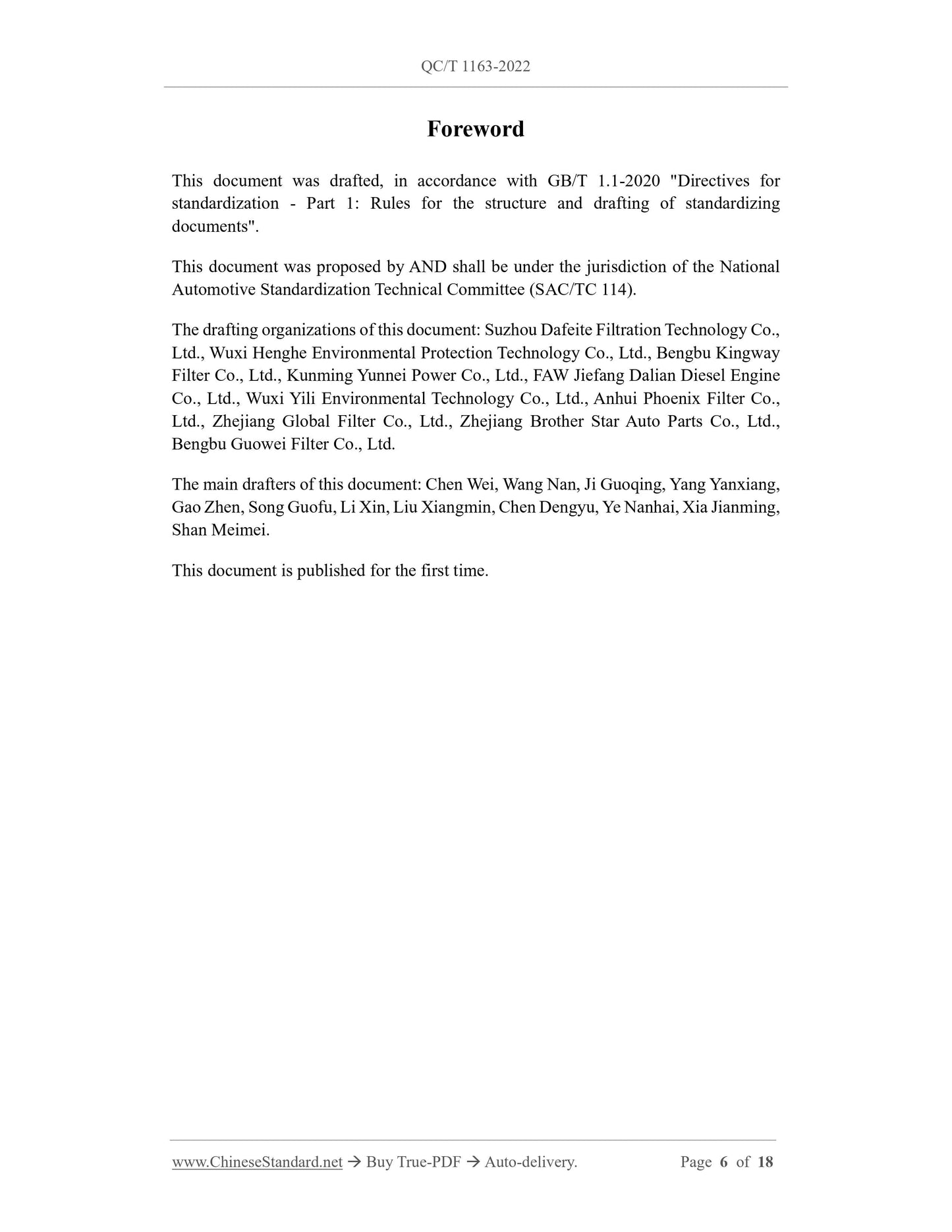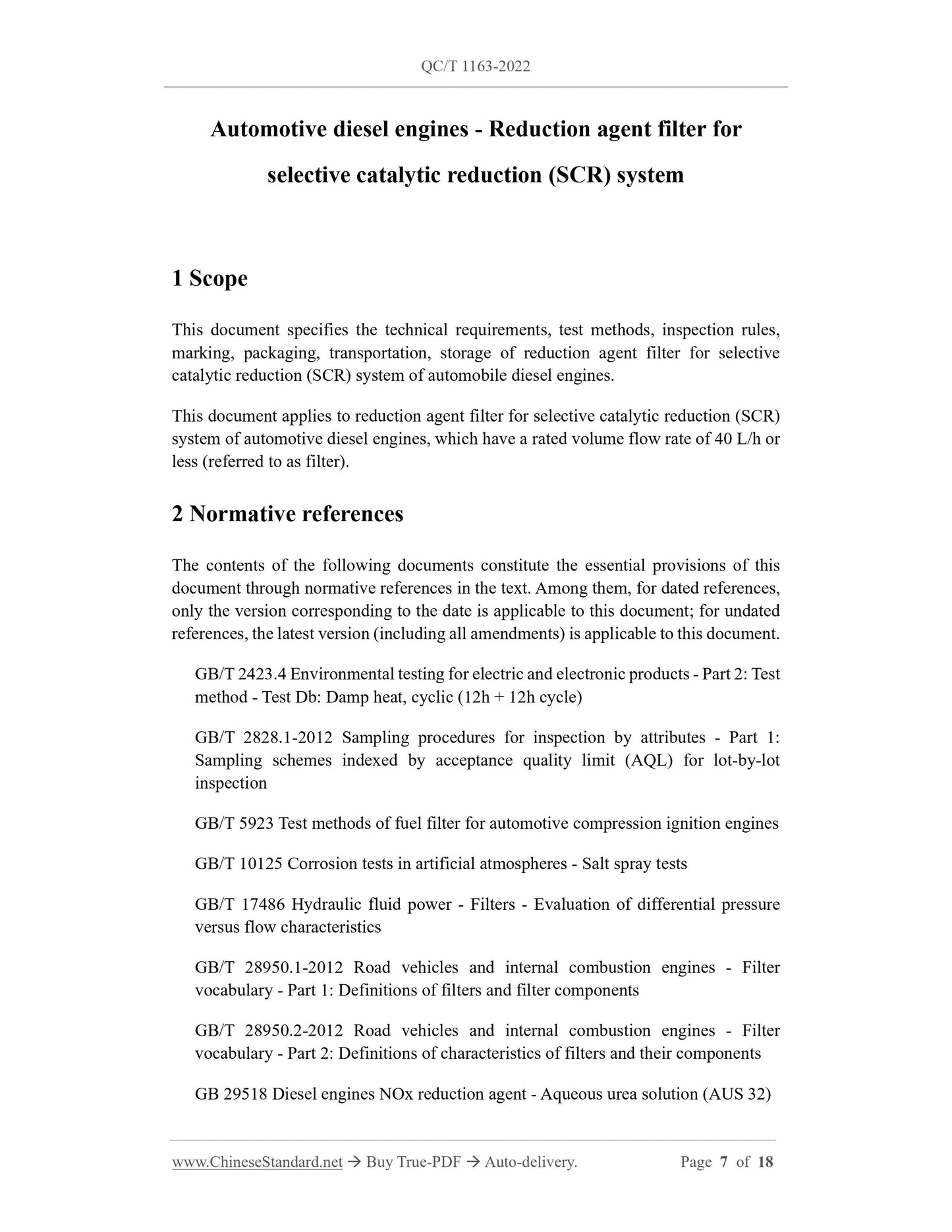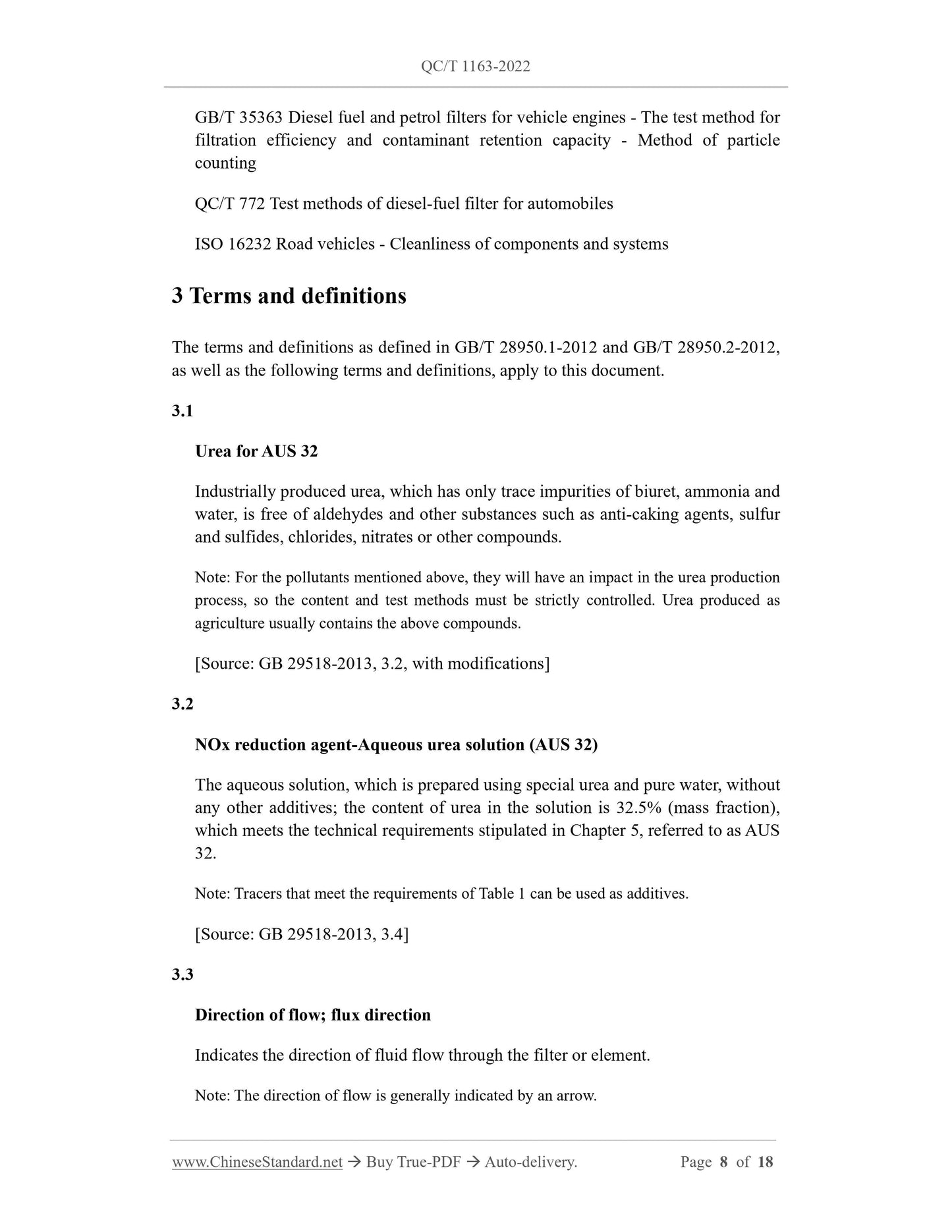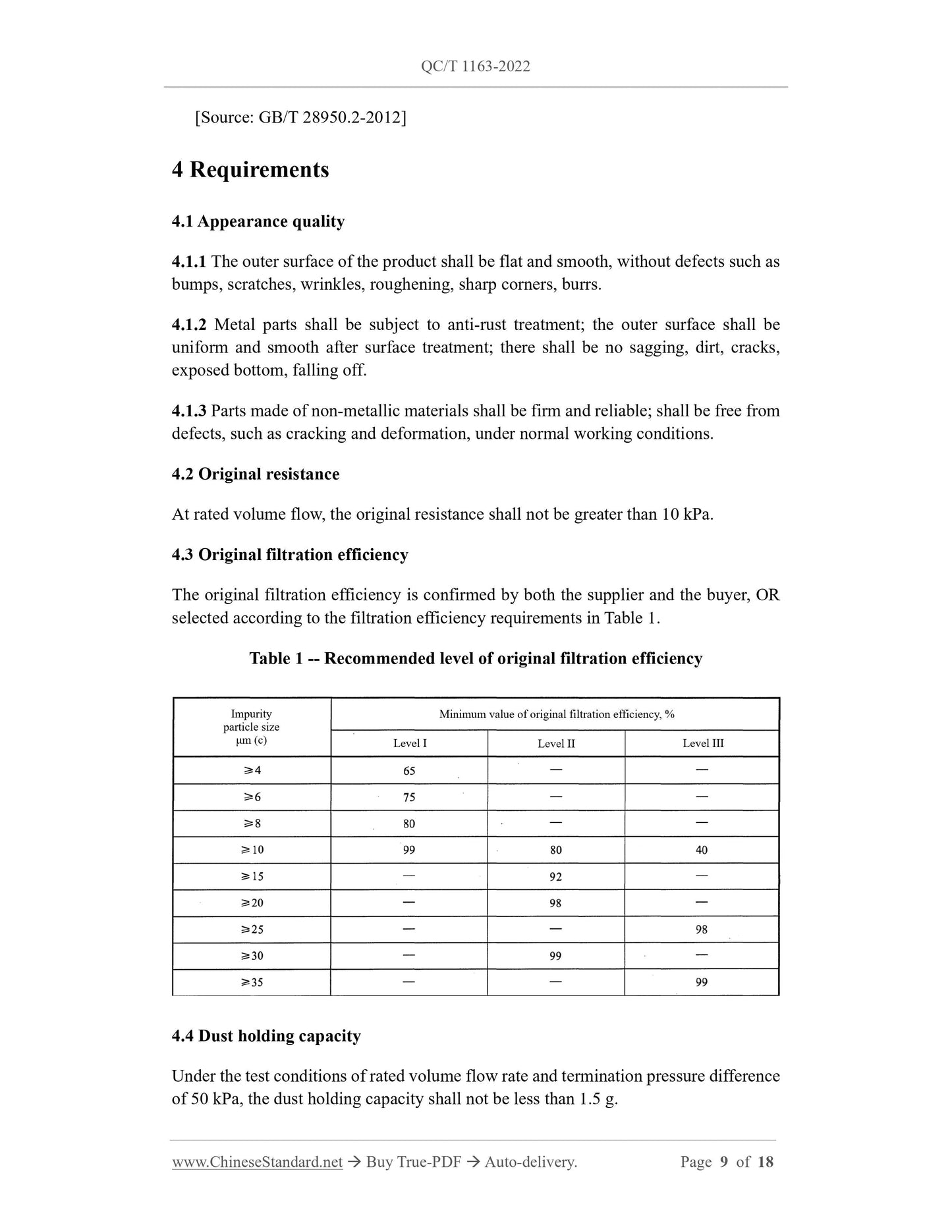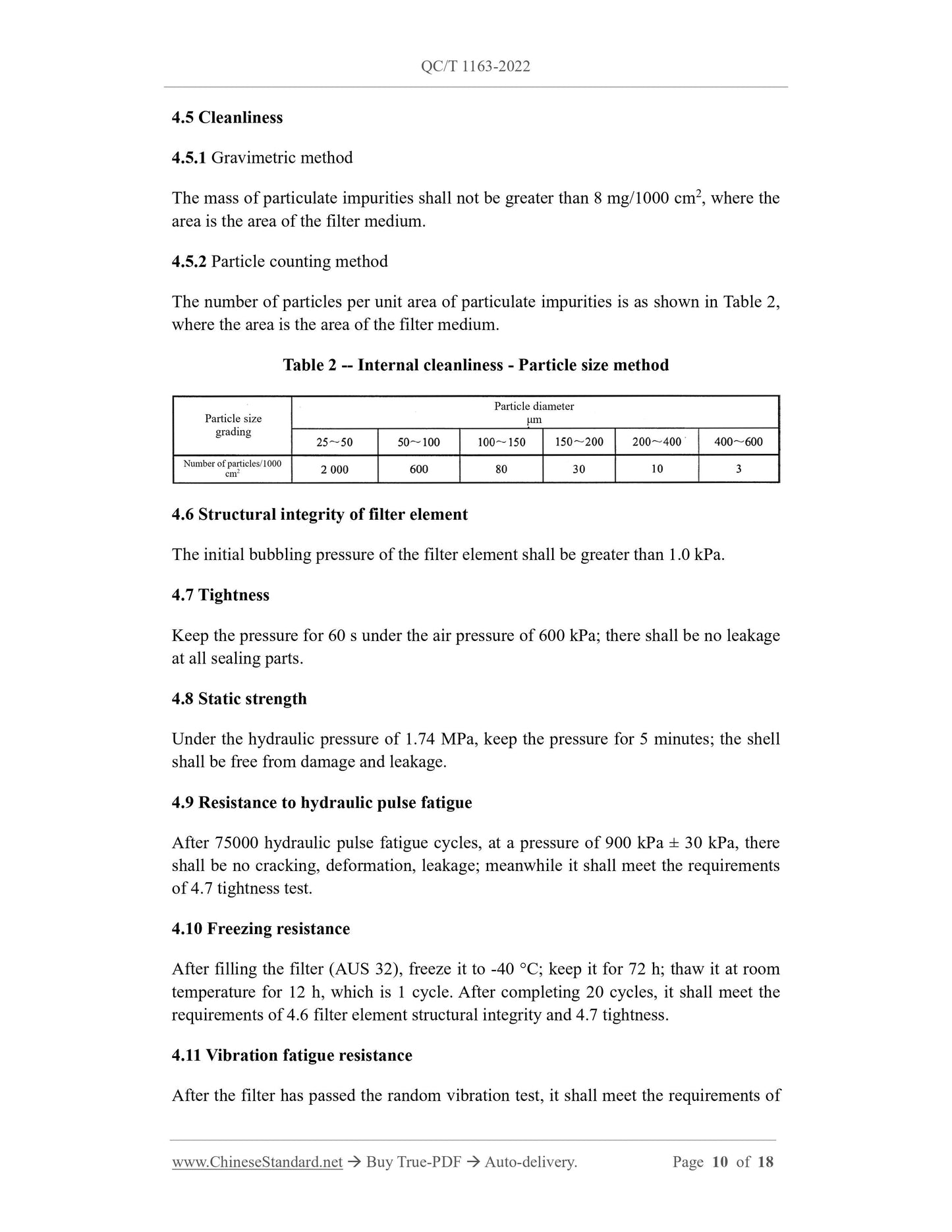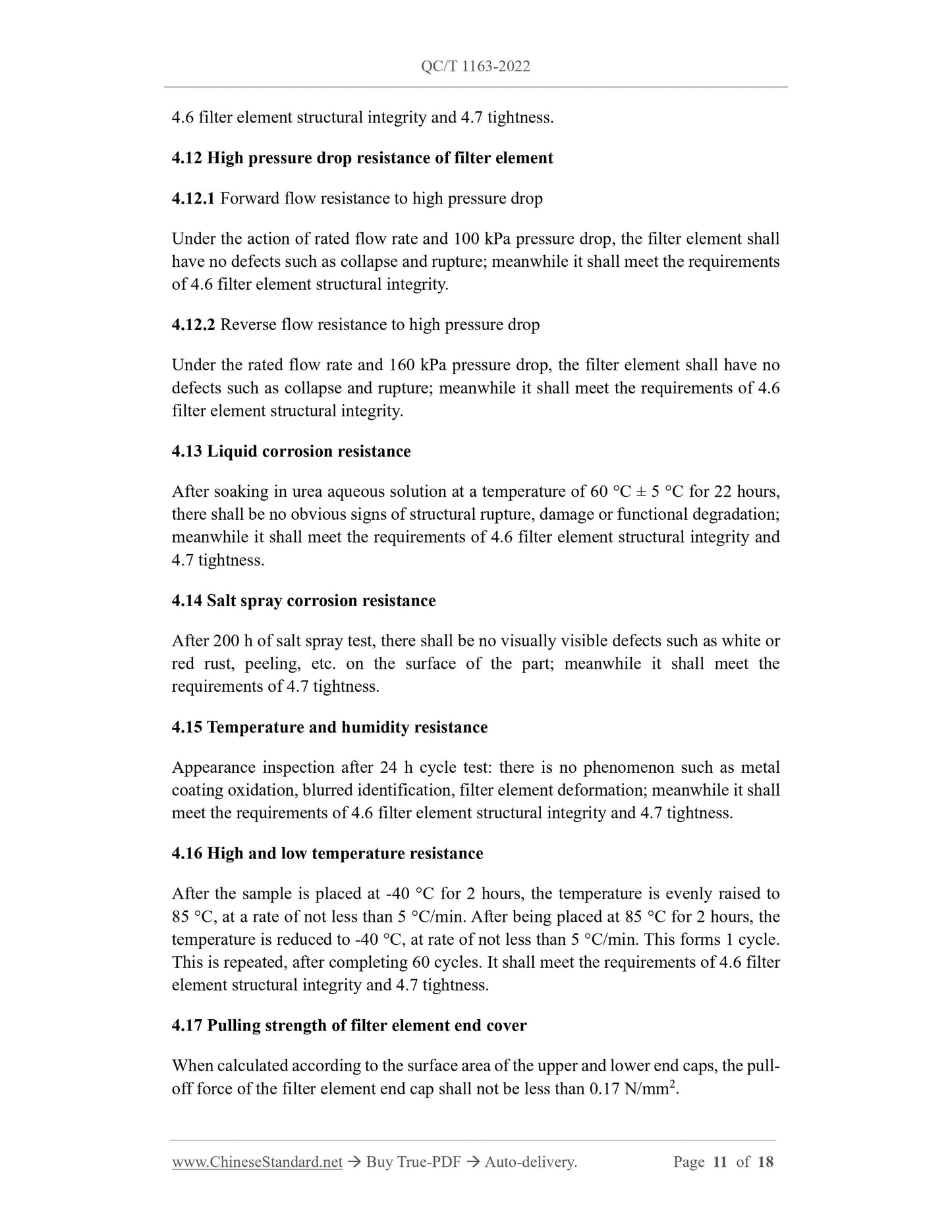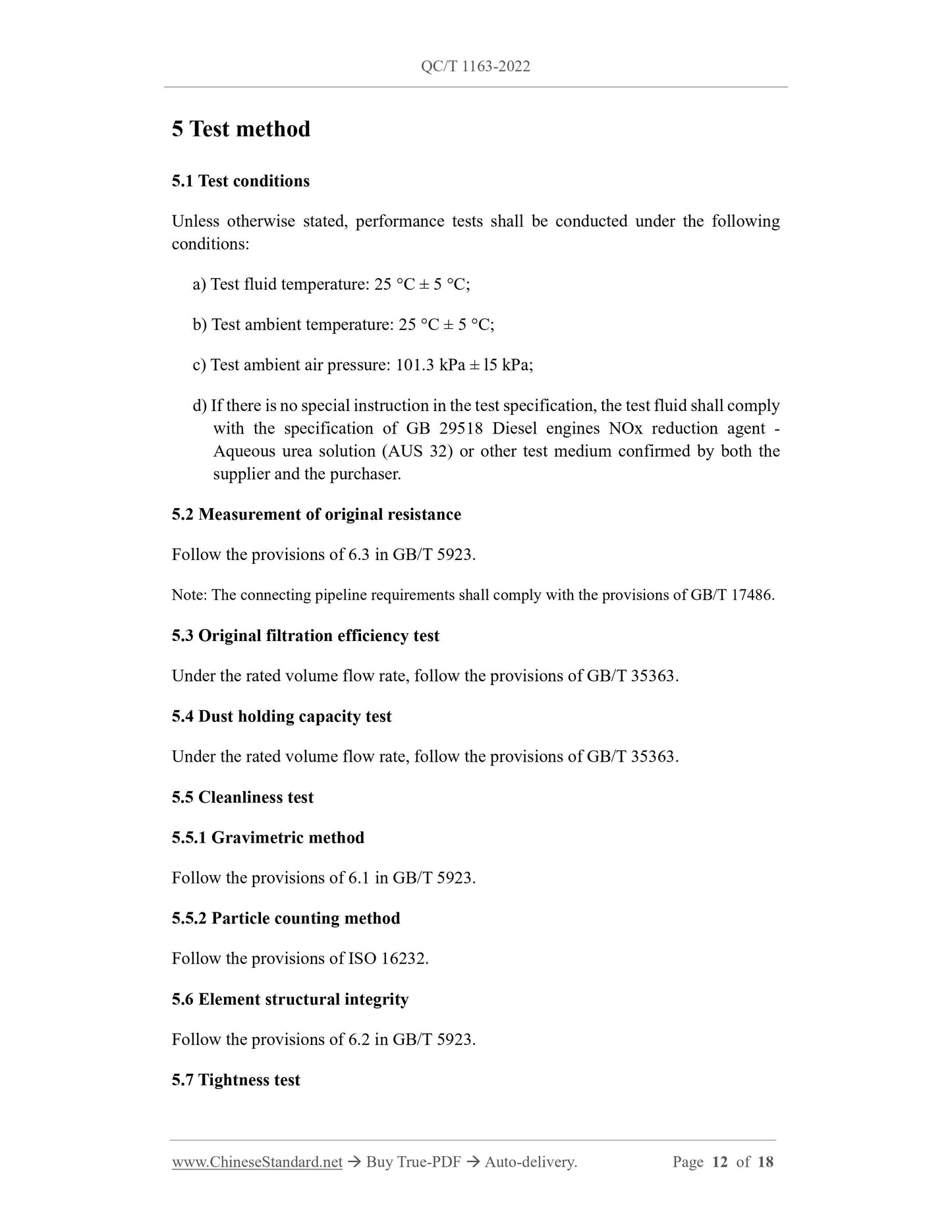1
/
of
12
www.ChineseStandard.us -- Field Test Asia Pte. Ltd.
QC/T 1163-2022 English PDF (QC/T1163-2022)
QC/T 1163-2022 English PDF (QC/T1163-2022)
Regular price
$245.00
Regular price
Sale price
$245.00
Unit price
/
per
Shipping calculated at checkout.
Couldn't load pickup availability
QC/T 1163-2022: Automotive diesel engines - Reduction agent filter for selective catalytic reduction (SCR) system
Delivery: 9 seconds. Download (and Email) true-PDF + Invoice.Get Quotation: Click QC/T 1163-2022 (Self-service in 1-minute)
Newer / historical versions: QC/T 1163-2022
Preview True-PDF
Scope
This document specifies the technical requirements, test methods, inspection rules,marking, packaging, transportation, storage of reduction agent filter for selective
catalytic reduction (SCR) system of automobile diesel engines.
This document applies to reduction agent filter for selective catalytic reduction (SCR)
system of automotive diesel engines, which have a rated volume flow rate of 40 L/h or
less (referred to as filter).
Basic Data
| Standard ID | QC/T 1163-2022 (QC/T1163-2022) |
| Description (Translated English) | Automotive diesel engines - Reduction agent filter for selective catalytic reduction (SCR) system |
| Sector / Industry | Automobile and Vehicle Industry Standard (Recommended) |
| Classification of Chinese Standard | T13 |
| Word Count Estimation | 16,111 |
| Date of Issue | 2022-04-08 |
| Date of Implementation | 2022-10-01 |
| Issuing agency(ies) | Ministry of Industry and Information Technology |
| Summary | This standard specifies the technical requirements, test methods, inspection rules, marking, packaging, transportation and storage of reductant filters used in selective catalytic reduction (SCR) systems of automobile diesel engines. This standard applies to reducing agent filters for selective catalytic reduction (SCR) systems of automotive diesel engines with a rated volume flow rate of 40L/h or less. |
Share
